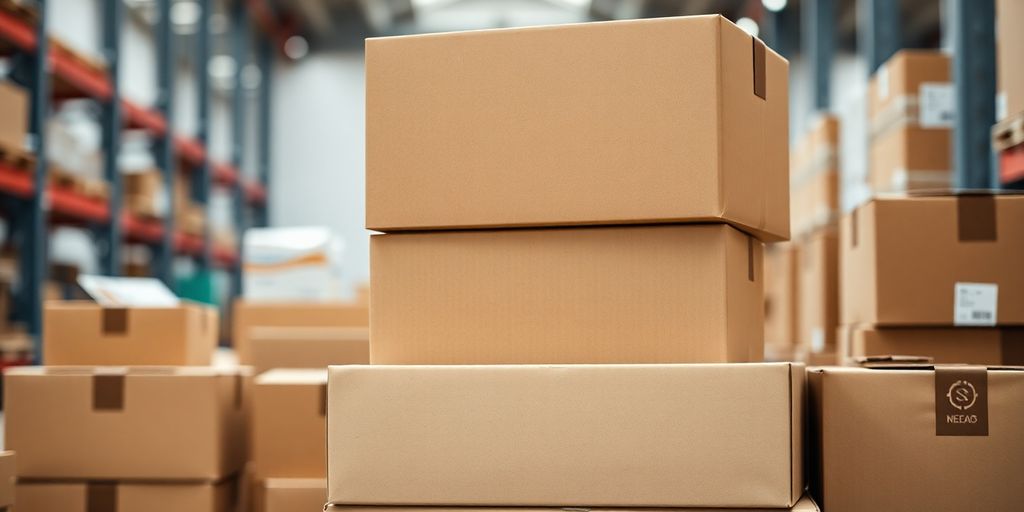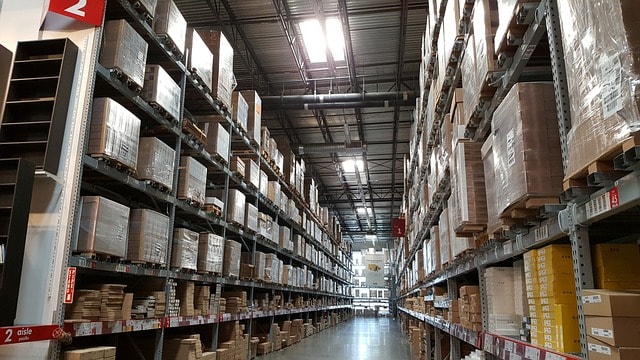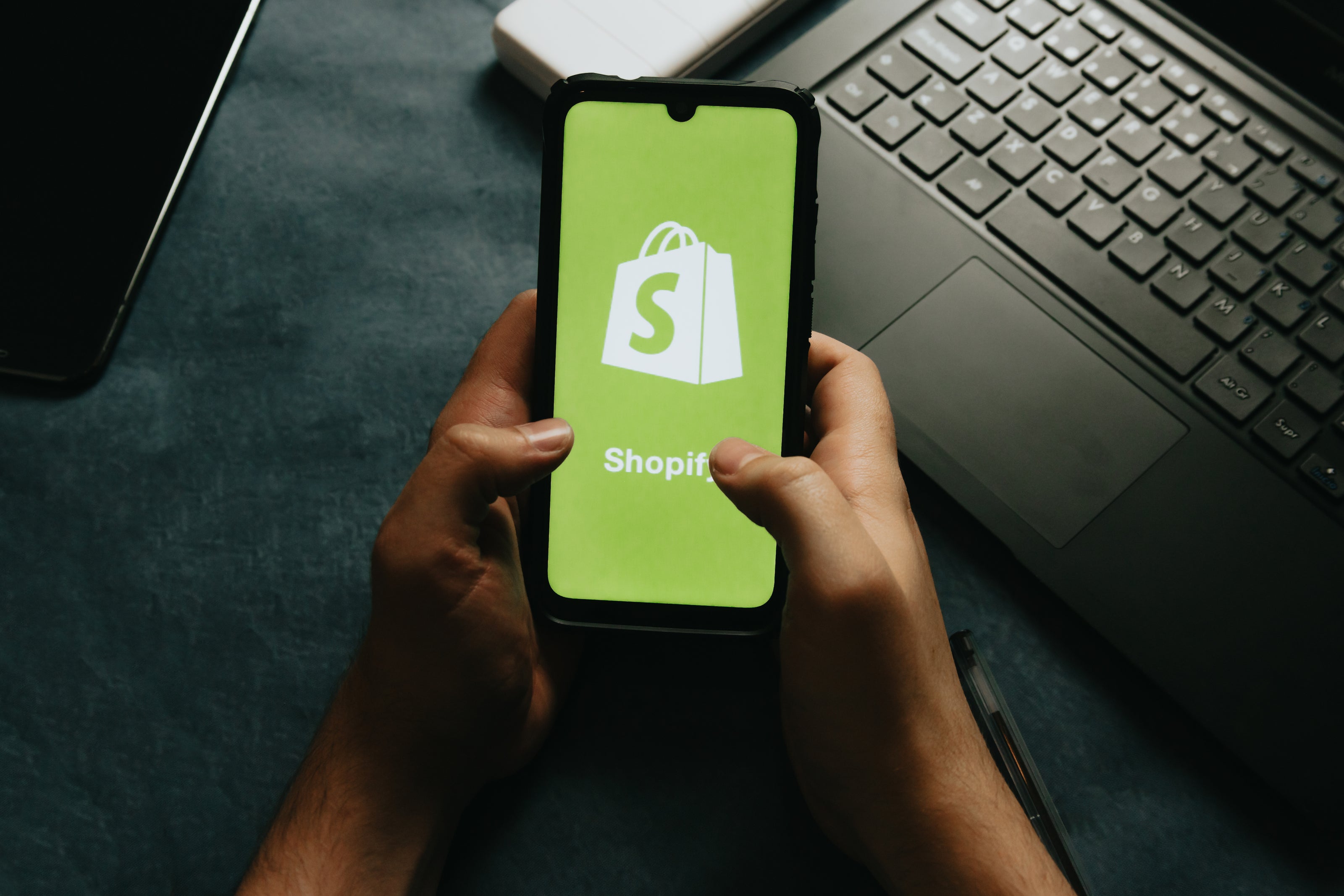
Dropshipping Shipping Strategies; Navigating Shipping and Fulfillment in Dropshipping in 2025
Share
Dropshipping is like running an online store without the hassle of handling products yourself. You sell items, but your supplier ships them directly to the customer. Sounds simple, right? But there's a lot more to it, especially when it comes to shipping strategies. Getting the right products to your customers efficiently can make or break your business. Let's look into some key takeaways for mastering dropshipping shipping strategies.
Navigating Shipping and Fulfillment - Key Takeaways
- Build strong relationships with reliable suppliers to ensure smooth shipping.
- Use technology to automate order processing and reduce errors.
- Balance delivery speed and cost to keep customers happy and manage expenses.
- Understand international shipping rules to avoid customs delays.
- Consider using multiple fulfillment centers to optimize delivery times.
Understanding Dropshipping Shipping Strategies

Defining Dropshipping in E-commerce
Dropshipping is a retail fulfillment method within the broader framework of an ecommerce business where a store doesn’t keep the products it sells in stock. Instead, when a store sells a product, it purchases the item from a third party and has it shipped directly to the customer - this means the seller doesn’t have to handle the product directly. This model has gained popularity due to its low overhead costs and ease of entry, especially with platforms like dropshipping with Alibaba offering vast product selections.
Key Players in the Dropshipping Model
In the dropshipping model, several key players are involved:
- Suppliers/Manufacturers: They produce and store the products, handling the warehousing and shipping.
- Retailers/Dropshippers: They market and sell the products, focusing on customer service and sales.
- Customers: They purchase products from the retailer's online store.
Dropshipping businesses are legal and legitimate business models that require thorough marketing strategies to succeed. Despite a high failure rate, dropshipping businesses can thrive with dedication and the right tools, highlighting the significance of a solid foundation and proper planning for long-term success.
These roles are interconnected, with each player having distinct responsibilities to ensure smooth operations. Understanding these roles is crucial for managing expectations and building effective partnerships.
How Dropshipping Differs from Traditional Retail
In traditional retail, businesses buy products in bulk, store them and handle the shipping themselves. Dropshipping, on the other hand, eliminates the need for inventory management and upfront investment in stock. This allows businesses to focus more on identifying profitable dropshipping niches and enhancing the customer experience.
Dropshipping offers flexibility and scalability, making it an attractive option for entrepreneurs looking to minimize risk and maximize their dropshipping profit margin. However, it requires careful management of supplier relationships and shipping strategies to ensure customer satisfaction and achieve dropshipping success.
Choosing the Right Shipping Partners

Evaluating Dropshipping Suppliers
When it comes to dropshipping, finding the right suppliers is like finding a needle in a haystack. It's crucial to pick suppliers who are reliable and can deliver on time. Start by checking their track record. Look for reviews and testimonials from other businesses. Ask questions about their delivery times, their packaging standards and how they handle returns. Make sure they have a good reputation for quality and timeliness - additionally, consider how a supplier fits into your overall dropshipping marketing strategy, as a reliable supplier can enhance your brand's visibility and customer trust.
Building Strong Supplier Relationships
Once you've found potential suppliers, it’s all about building a strong relationship. Communication is key. Be clear about your expectations and be open to their feedback. Regular check-ins can help maintain a good rapport. You want them to feel like they’re part of your team, not just a vendor. This can lead to better service and even some flexibility in terms.
Negotiating Shipping Terms
Negotiating shipping terms can save you money and improve your margins. Discuss bulk shipping discounts or special rates for frequent shipping. Don’t be afraid to negotiate terms that benefit both parties. Having clear terms can prevent misunderstandings later on. Remember, it’s not just about getting the lowest price – it’s about getting the best value for both you and your customers.
Building a successful dropshipping business often hinges on the strength of your partnerships. By choosing the right suppliers and nurturing these relationships, you can ensure a smoother operation and happier customers.
Integrating with Your Supply Chain

Integrating effectively with your supply chain is crucial for a seamless dropshipping operation. This process involves a series of steps that ensure your business runs smoothly from the moment a customer places an order to the point it reaches their doorstep.
Setting Up Supplier Integrations
The first step in integrating with your supply chain is to establish solid connections with your suppliers. This means selecting the right dropshipping suppliers who align with your business goals and can provide reliable service. Choosing the right ecommerce platform, such as Shopify or WooCommerce, is crucial as it impacts the integration tools you can use to sync your online store with supplier inventories. It’s essential to have clear communication channels and agreements in place to prevent any hiccups in the order process. Consider using integration tools that automatically sync your online store with supplier inventories, ensuring that stock levels are always accurate and up-to-date. I find Shopify the most user friendly, it also has a free trial so you can try it and cancel if it is not for you.
Automating Inventory Management
Automation is your best friend when it comes to inventory management. By automating your inventory processes, you reduce the risk of human error and save a significant amount of time. Automation tools can help you keep track of stock levels, update product listings and manage pricing dynamically. This not only streamlines operations but also enhances the customer experience by reducing the likelihood of stockouts or over-selling.
Ensuring Real-Time Stock Updates
Real-time stock updates are vital to maintaining trust with your customers. When a product is out of stock, it should immediately reflect in your online store to prevent customer dissatisfaction. Implementing systems that provide real-time updates can be a game-changer in managing expectations and ensuring customer satisfaction.
In the world of dropshipping, your supply chain is everything. By automating processes and keeping your stock synchronized with suppliers, you can focus on what truly matters: growing your business and keeping your customers happy.
These steps are all about making your dropshipping business more efficient and reliable. By integrating smartly with your supply chain, you can focus more on outsourcing the logistics and less on the hassles of manual management.

Order Fulfillment Process in Dropshipping
Steps in the Fulfillment Process
In the world of dropshipping, order fulfillment is a key part of running a successful business. Successful dropshipping stores share a common trait: they utilize effective tools, especially automation software, to streamline their operations. This technology minimizes manual tasks and human error, which supports the growth and efficiency of their businesses. The process kicks off the moment a customer places an order on your online store. Here’s a quick look at the steps involved:
- Integration with Your Supply Chain: Start by deciding which products you want to sell and find reliable dropshipping suppliers. These suppliers will provide the necessary product details, like photos and descriptions, to help you sell without handling the products physically.
- Customer Places an Order: Once your products are listed, the next step is marketing and selling. When a customer places an order, it triggers a series of actions, including processing the payment and notifying the supplier.
- Communicating Orders to Suppliers: After a customer's order is processed, you need to communicate the order details to your supplier. This step is often manual but can be automated for efficiency.
- Supplier Ships the Product: The supplier takes over, packaging and shipping the product directly to the customer.
- Managing Customer Expectations: Throughout this process, maintaining clear communication with your customers about their order status is crucial.
Communicating Orders to Suppliers
Once an order is placed, it's your job to ensure the supplier gets all the necessary details to fulfill it. While some systems automate this, many require a manual process, like sending an email with the order information. Keeping an eye on this step helps prevent errors and delays.
Managing Customer Expectations
Keeping customers informed is vital. They need to know when their order is shipped and when to expect delivery. Offering tracking information and updates can significantly improve the customer experience.
In dropshipping, while you may not handle the physical products, your role in managing the process is critical to customer satisfaction and business success. It's all about ensuring the entire order delivery process runs smoothly, from start to finish.
Leveraging Technology for Efficient Shipping

Automation Tools for Order Processing
In the dropshipping game, time is everything. That’s why automating order processing can save you a ton of hassle in managing an online business. Think about it. Instead of manually entering orders, automation tools sync your online store with suppliers, automatically forwarding orders for fulfillment. This not only speeds up the process but also cuts down on mistakes that could mess up your delivery times. Here are some benefits of using automation tools:
- Reduced Manual Tasks: Automation tools handle repetitive tasks, freeing up your time for other important activities.
- Minimized Errors: With automation, the chance of human error drops significantly.
- Faster Order Processing: Orders move through the system more quickly, ensuring timely delivery.
Tracking and Managing Shipments
Keeping tabs on shipments is crucial for any dropshipping business. You don't want to be left in the dark about where your products are. Technology provides real-time tracking, so you know exactly where each order is at any given moment. It's like having eyes on your packages 24/7. This transparency helps in:
- Improving Customer Satisfaction: Customers appreciate knowing the status of their orders.
- Identifying Delays Early: Real-time tracking allows you to spot and address delays before they become bigger problems.
- Enhancing Inventory Management: With better tracking, you can manage stock levels more effectively.
Reducing Human Error in Fulfillment
Mistakes happen, but technology can help keep them to a minimum. By using advanced systems, you can reduce the risk of errors in order fulfillment. These systems often include features like barcode scanning and automated inventory updates, which help maintain accuracy throughout the fulfillment process. Here’s how technology helps:
- Barcode Scanning: Ensures the right products are picked and packed.
- Automated Inventory Updates: Keeps stock levels accurate, preventing overselling.
- Error Alerts: Systems can notify you of potential issues before they escalate.
Embracing technology in dropshipping isn't just a smart move; it's essential for staying competitive in today's fast-paced e-commerce world. By integrating automation and tracking tools, businesses can enhance cost-effectiveness and improve customer satisfaction.
Incorporating these tech solutions not only streamlines operations but also positions your business for growth in the ever-evolving e-commerce landscape.
Optimizing Shipping Costs and Delivery Times
When it comes to dropshipping, finding the right balance between cost and speed is crucial. Shipping costs can quickly eat into your profits, so it's essential to strategize effectively.
Strategies for Cost-Effective Shipping
- Negotiate with Carriers: Always try to negotiate better rates with shipping carriers. They often provide discounts for bulk shipping or long-term contracts.
- Use Shipping Software: Implement software that compares rates across different carriers. This can help you choose the most cost-effective option for each shipment and when combined with search engine optimization, it can improve your website's visibility and attract more customers, ultimately reducing shipping costs through increased sales.
- Optimize Packaging: Reduce package size and weight where possible, as this can significantly lower shipping costs.
Balancing Speed and Cost
- Select the Right Shipping Methods: Sometimes, offering multiple shipping options can help balance cost and speed. For instance, let customers choose between standard and expedited shipping.
- Communicate Shipping Speeds: Clearly communicating shipping speeds at checkout can significantly boost cart conversion rates and enhance transparency.
- Use Local Fulfillment Centers: If possible, store products closer to your customers to reduce delivery times without increasing costs.
Using Multiple Fulfillment Centers
Having products in multiple locations can drastically cut down shipping times. This approach not only enhances the customer experience by providing quicker deliveries but also helps in managing shipping costs better. Consider these steps:
- Analyze Customer Locations: Determine where most of your customers are and position your inventory in those regions.
- Partner with 3PLs: Third-party logistics providers can help distribute inventory across various locations, optimizing both speed and cost.
- Monitor and Adjust: Regularly review your shipping data to make informed adjustments in your fulfillment strategy.
Efficient shipping not only saves money but also builds trust with your customers. It's about finding the sweet spot between cost and speed to keep everyone happy.
Navigating International Shipping Challenges
Understanding Customs and Duties
Shipping internationally can be a minefield of regulations and fees. Customs and duties are unavoidable hurdles that businesses must navigate. Each country has its own set of rules about what can be imported, the taxes that apply and how these goods must be declared. Ignorance of these rules can lead to delays and unexpected costs. It’s crucial to research the specific requirements of each country you plan to ship to using search engines and ensure your suppliers provide all necessary documentation.
Choosing the Right International Carriers
Selecting the right carrier for international shipping is vital. You need a partner who understands the intricacies of cross-border logistics and can offer reliable service. Look for carriers with a strong international presence and a track record of timely deliveries. Consider the following when choosing a carrier:
- Coverage: Ensure the carrier covers all the countries you plan to ship to.
- Cost: Compare shipping rates and look for any hidden fees.
- Service Level: Check their delivery times and handling of fragile goods.
Managing Cross-Border Returns
Handling returns on international orders can be tricky. It's not just about the logistics but also the cost implications. Develop a clear return policy that accounts for international shipping and communicate this to your customers. Consider the following strategies:
- Local Returns: Partner with local warehouses to handle returns more efficiently.
- Return Labels: Provide pre-paid return labels to simplify the process for customers.
- Clear Communication: Keep customers informed about the return process and any costs involved.
In the world of dropshipping, mastering international shipping challenges is not just about moving products across borders. It's about building trust with your customers by ensuring their orders arrive safely and on time, no matter where they are.
Enhancing Customer Experience Through Shipping

Importance of Fast and Reliable Delivery
In the world of dropshipping, delivery speed and reliability are game-changers. Customers expect their packages quickly and without hassle and meeting these expectations can set your business apart. It’s not just about getting the product to the customer; it’s about doing it in a way that builds trust and satisfaction. Fast delivery can lead to repeat business and transform one-time shoppers into loyal customers, while delays might push customers to look elsewhere. To ensure reliability, consider partnering with dependable dropshipping suppliers who prioritize timely shipments.
Handling Shipping Delays and Issues
Shipping delays are inevitable, but how you handle them can make a huge difference. Here’s a simple approach to manage these situations:
- Communicate Early: As soon as you know there’s a delay, inform your customer. Transparency helps in managing expectations.
- Offer Solutions: Whether it’s a discount on their next purchase or a free upgrade, offering something can ease the frustration.
- Follow Up: After resolving the issue, check in with your customer to ensure everything is satisfactory.
Communicating with Customers Effectively
Effective communication is key in maintaining a positive customer experience. Keep your customers in the loop from the moment they place an order to when it arrives at their doorstep. Use automated emails to update them on the order status and expected delivery times. If issues arise, a personal touch, like a phone call, can go a long way in showing that you care about their experience.
Remember, the way you communicate during the shipping process reflects your brand's commitment to customer satisfaction. Prioritizing clear, honest and timely communication can turn a potential negative experience into a positive one.
Scaling Your Dropshipping Business

Expanding Product Lines and Markets
To scale a dropshipping business effectively, it’s crucial to diversify your product offerings to attract potential customers. By introducing new products, you can tap into different markets and meet varying customer needs. This doesn’t mean you should add any product randomly. Instead, focus on expanding within your niche or related categories. Doing so helps you maintain brand consistency while reaching a broader audience.
- Research Market Trends: Stay updated with the latest trends to identify potential products.
- Test New Products: Use your existing platform to test new items and gauge customer interest.
- Monitor Competitors: Keep an eye on what your competitors are offering and how their products are performing.
Using Data to Drive Shipping Decisions
Data is a powerful tool in optimizing your shipping strategies. Analyze sales data to understand which products are in demand and adjust your inventory accordingly. This helps in reducing shipping times and costs, as you can stock products closer to your customer base.
- Track Shipping Metrics: Monitor delivery times, shipping costs and customer feedback to improve service.
- Utilize Customer Data: Understand customer preferences and buying patterns to tailor your offerings.
- Implement Predictive Analytics: Use data to foresee demand spikes and prepare your supply chain in advance.
Preparing for Seasonal Demand
Seasonal trends can significantly impact your dropshipping business. Preparing in advance for these fluctuations ensures that you can meet demand without compromising on service quality.
- Stock Up Early: Identify peak seasons and ensure your suppliers are ready to meet increased demand.
- Flexible Shipping Options: Offer various shipping methods to cater to different customer needs during busy times.
- Communicate with Suppliers: Maintain open lines of communication with your suppliers to handle unexpected demand surges efficiently.
Scaling a dropshipping business isn't just about adding more products. It's about strategic growth, understanding market dynamics and making data-driven decisions to enhance customer satisfaction and boost profitability.
By focusing on these strategies, you can effectively scale your dropshipping business, ensuring long-term success and sustainability. For more insights, check out our detailed guide on how to scale a dropshipping store to six figures.

Comparing Dropshipping with Third-Party Fulfillment
Benefits of Third-Party Logistics (3PL)
When it comes to fulfillment, third-party logistics (3PL) providers offer some clear advantages. First off, they handle everything from warehousing to picking, packing and shipping. This means you can focus more on marketing and growing your business without worrying about logistics. With 3PL, you also get the benefit of expertise. These guys know the ins and outs of shipping, which can help streamline your operations and reduce errors.
- Scalability: 3PLs can easily ramp up operations during busy seasons, so you’re not left scrambling.
- Time Savings: Outsourcing logistics lets you focus on core business activities.
- Expert Insight: Gain access to logistics experts who can optimize your supply chain and help you identify the right social media platform for your marketing efforts.
When to Choose Dropshipping Over 3PL
Dropshipping might be the way to go if you’re starting out with limited capital. It allows you to offer a wide variety of products without the need to manage inventory. This model is especially appealing if you want to test new products or markets without a huge commitment.
- Low Start-Up Costs: No need to invest in inventory upfront.
- Flexibility: Operate your business from anywhere.
- Wide Product Range: Offer more products without the burden of stocking them.
Hybrid Models for Growing Businesses
For businesses that are growing, a hybrid model might make the most sense. This involves combining elements of both dropshipping and 3PL. You can use dropshipping to test new products or markets, while relying on a 3PL to handle logistics for your best-selling items. This approach gives you the flexibility to scale and adapt as your business evolves.
A hybrid approach allows businesses to leverage the strengths of both models, offering flexibility and control as needed.
In conclusion, the choice between third-party shipping and drop shipping fulfillment depends on your specific business needs. Each model has its own set of benefits and challenges and understanding these can help you make the right decision for your business.
Conclusion
Alright, so there you have it. Dropshipping can be a bit of a rollercoaster ride, but with the right shipping strategies, it can really pay off. It's all about finding that sweet spot where your suppliers, shipping methods and customer expectations align. Sure, it might take some trial and error, but once you get the hang of it, you'll be cruising. Just remember, keep your customers in the loop, stay on top of your suppliers and don't be afraid to tweak things as you go. In the end, a smooth fulfillment process can make all the difference in keeping your business running like a well-oiled machine. So, go on, give it a shot and see where it takes you!
Further Reading on the Dropshipping Business Model
Dropshipping Mistakes and How to Avoid them
Oberlo Vs DSers for Dropshipping
Best Shopify Themes for Dropshipping
Essential Shopify Apps for your Dropshipping Store
Further Reading - Comparing Dropshipping to other eCommerce Models:
Shopify vs Amazon Dropshipping
Dropshipping Vs Print on Demand
Frequently Asked Questions
What is dropshipping?
Dropshipping is a way to sell products online without keeping them in stock. Instead, when someone buys from your store, you order the product from a supplier who ships it directly to the customer. The dropshipping business model allows sellers to operate without holding inventory, offering advantages such as low startup costs, reduced overhead and the opportunity for flexibility and scalability.
How is dropshipping different from regular retail?
In regular retail, stores keep products in stock and ship them to customers. In dropshipping, the store doesn't hold any inventory; instead, the supplier ships products directly to the buyer.
What are the main benefits of dropshipping?
Dropshipping allows you to start a business with low upfront costs, offer a wide range of products and run your store from anywhere since you don't need to manage inventory.
Can I use multiple suppliers for my dropshipping store?
Yes, you can work with multiple suppliers to offer a variety of products. This can help you provide more options to your customers and reduce the risk of stockouts.
How do I choose a reliable dropshipping supplier?
Look for suppliers with good reviews, reliable shipping times and quality products. It's also important to communicate clearly and establish a strong relationship with them.
What are some challenges of dropshipping?
Challenges include lower profit margins, reliance on suppliers for product quality and shipping and potential for longer delivery times compared to traditional retail.
How can I handle returns in a dropshipping model?
Set clear return policies and work closely with your suppliers to manage returns. Make sure your customers know the process and any fees involved.
Is dropshipping a good option for beginners?
Yes, dropshipping is often recommended for beginners because it requires less capital and allows you to test different products and markets without a big investment.










































































































